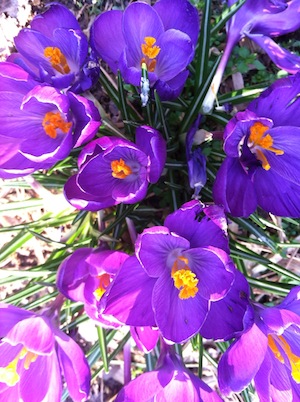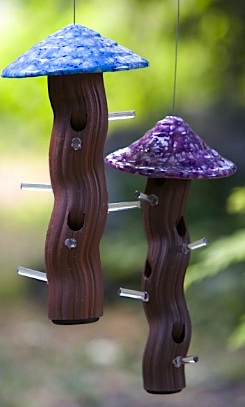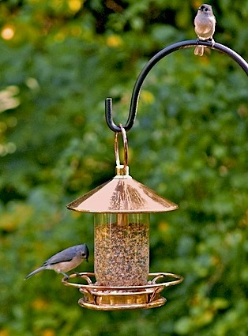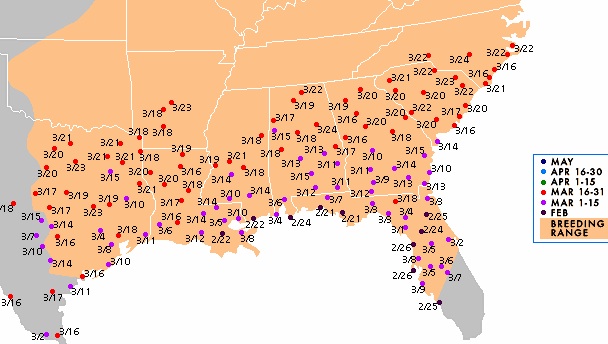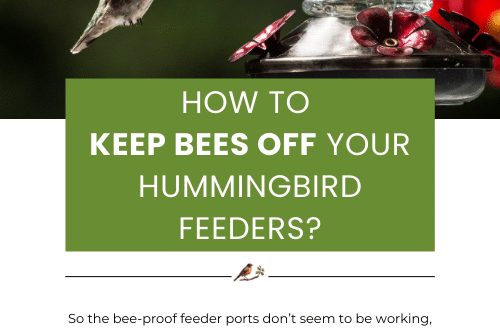-
Stalking the Dreaded Dirty Garden Glove
A pretty good read if you like cats and ever rescued one yourself.
Years ago, when I still lived in Atlanta, I was a regular at the Farmers’ Market where I bought most of my groceries and took advantage of the recycling center adjacent to the market. One Saturday morning, as I was being a responsible citizen and recycling my cans, glass, cardboard, plastics, and printer paper, a scrawny black kitten wandered out of the underbrush on the far side of the parking lot and made her way to me. Now mind you, there were easily two dozen other people she could have chosen, but it was my feet she flopped down on.
I picked her up to get a better look at her. Her eyes were a gummy mess. Her fur was muddy and matted. Every bone poked out every which way. Her abdomen was sunken in and she was too weak to even mew.
Some guy “helpfully” suggested I take her to the vet clinic over near Emory University where he said they’d <his words> “put her down for free.” (Note to self: not everyone who recycles holds the same views as I do on matters other than recycling, but I digress.)
I didn’t take her to the clinic near Emory. I brought her home with me. I confess, I tried for days to find someone —- anyone —- who would take her and make her their own, but no dice. I already had two cats, and what sane person would ever have as many as THREE??? Surely I couldn’t keep this kitten. But the Divine Universe had spoken. This little ragamuffin had elected me to be her person. Who was I to argue with destiny?
So Jackie Mew-vee-ay (I was a big fan of Jackie Bouvier Kennedy Onassis) joined Butch and Bruce, and mine became a three cat household. Little by little, the waif put on some weight. Her bones protruded less and her lackluster coat took on a healthy shine. In a few months, she morphed from a scraggly, homeless urchin into a sleek, gorgeous goddess who ruled the house.
Butch and Bruce were still youngsters — wild guys who played with total abandon. Jack, on the other hand, had no interest whatsoever in any cat toy of any sort. It was as if all of her energy in her early months had gone to staying alive on the mean streets and the idea of exerting yourself just for fun was a completely alien notion.
One day after Jack had been with me a while, I’d been out working in the yard, and I forgot to take off my garden gloves before going into the house to get some lunch. I dropped the dirty gloves near the back door where I could grab them on my way back out after I’d eaten.
A few minutes later, I heard the unmistakable sounds of a cat trumpeting —- the sound they make when they’ve made a kill. And there came Jack, parading through the house carrying one of my gloves. She was so proud. She marched around as though she’d slain the biggest, baddest mouse in the history of the world. Then like every cat who wants to prove to her person how very useful she is, she laid her trophy (the glove) at my feet and trumpeted once more just for good measure.
I praised that girl for all I was worth. I told her she was my heroine and that I knew I’d be safe from evil garden gloves for all time and eternity. In typical cat fashion, she ignored me, flicked her tail, and went on her way.Thus began Jack’s love affair with garden gloves. Since it was the only thing that came close to passing as a toy or recreation for her, I took to leaving gloves around the house. She didn’t like clean ones, only those that had been used. Maybe it was the smell of the earth on them. Maybe she liked that they had the scent of my perspiration on them. Who knows what goes on in a cat’s head?
Circumstances changed, and in August of 2001, I left Decatur to move to the mountains. Butch, Bruce, and Jack came, too. Cleo joined the family in early 2002, just a short time before Butch’s kidneys failed him at the tender age of five-and-a-half. That loss cracked open the gate, and I found myself drawn to giving cats that were out of options a place to call home. As the cat population grew (and grew), through it all, Bruce and Jack were my constants —- my “original” kids.
Bruce was granted 15 years. He left me in late March of 2011.
Only Jack, my slayer of the deadly garden glove, remained from my original trio.
Night before last, around 10:00, Jack had a serious stroke that left her partially paralyzed. I called the nearest emergency vet facility and described what was happening. The vet assured me that if Jack wasn’t crying out in pain, laboring to breathe, or having repeated seizures/convulsions, if I wished to, I could keep her comfortable at home until my regular vet’s office opened in the morning. My other choice was to bring her in and have her euthanized.
Jack and I talked it over and she made it clear she wanted to stay at home.
My first female feline, my first rescue from the streets and I spent one final night together side by side. We remembered all the good times and tried very hard not to think about the fact that the time had come for goodbye.
The next morning, Dr. Worthy gave Jack a tiny assist and my darling Jack was gone. As is my custom, I put Jack in a burial box with spices and flowers and wrote her name and the dates of her time with me on the box. I picked a spot right next to Butch and Bruce’s graves for Jack’s resting place.
I dug the grave, laid her burial box in the hole, and tossed in the first shovelful of dirt. As I did so, I noticed the garden gloves I was wearing.
I laid the shovel aside, brushed the dirt off the box, and pulled it back out. I opened the lid, stripped off my gloves, kissed Jack’s head one more time, and tucked my gloves in beside her.
I simply couldn’t run the risk that kitty heaven wouldn’t have the only thing that ever made my Jack Cat play.
When my time comes to join Jack (and all the other fur kids I’m counting on being there to greet me), I’ll be listening for the unmistakable sound of my Jack announcing she’s once again triumphed over the sinister garden glove.
Until then, my beloved Jack, happy hunting. Happy hunting.
-
So What’s the Best Tube Bird Feeder for Spring?
With spring in bloom (in much of the country anyway) there’s an instinct among nature types to get outdoors and work in the garden! For many, wild birds go hand-in-hand with love of gardening. Like the “eyes bigger than stomach” syndrome at a restaurant, heading into nurseries can easily turn into more than one bargained for! We know this first hand, as flowers sit in the driveway waiting to be planted.
Luckily for perennials like these crocus, color emerges effortlessly year after year. It also signals the beginning of nesting season for resident birds, and the migratory start for our southern feathered friends.
On the birding side, it’s a perfect time to give feeders a good cleaning, check birdhouses for old nests and clean them out too. Avoid leaving old nests on the ground near birdhouses as this attracts predators. Lots of fancy cleaners on the market, but a solution of bleach and water (1:10 ratio) is ideal. Scrub, rinse well, air dry… pretty simple.
If you’re just getting into the birding thing (lots of folks are these days) – where to start? So many feeders and gadgets out there! Fresh water and a
tube bird feeder are a great place to start! All birds are attracted to fresh water, be it a traditional birdbath, or simple pan of shallow water. Shallow’s the optimal word, 2-3-inches maximum is recommended. Something with texture too, as bird’s feet can get a better grip. Small rocks or pebbles in the bowl help with landing and perching.
So, what’s the best tube feeder? Like the bath, or anything else for that matter… it’s the one you will maintain! Feeders need to be filled fairly consistently, as well as cleaned. Wet, moldy seed serves no purpose at all, and birds will quit visiting a feeder with nasty contents. Plus it can spread disease among the local avian buddies in your yard.
Consider who you’d like to attract too. Thistle or nyjer seed is made for tube feeders, they have tiny ports for this tiny seed. Goldfinches, house and purple finches, siskins, buntings and redpolls enjoy thistle. Say you want a more “all-around” type feeder for chickadees, titmice, cardinals, nuthatches and some of the other usual suspects? You can’t beat a tube feeder with sunflower seed! It’s popular among many species and a great choice for a first or only feeder.
Some offer generous seed trays that make it easy for cardinals to feed. Although there are some general thoughts as to who will eat where, this winter proved all bets were off! Cardinals seen eating at suet feeders, juncos at sunflower feeders, and some other strange sightings due to the extreme weather.
The other really nice thing is that you can buy this seed sans the shell. Sunflower hearts (or meats) is a waste-free food that leaves hardly any ground mess. Whatever should fall to the ground is usually gobbled up by ground feeding birds like doves, juncos or chipping sparrows. It costs a few dollars more, but we think it’s well worth it! Cheaper seed leaves more waste because of the fillers most birds peck out and discard… so where’s the value?
In choosing a new tube bird feeder, pick one with sturdy construction that you know will last. Although inexpensive, plastic isn’t always the best choice as squirrels can and likely will chew it to bits. Ceramic is chew-proof, as is copper, stainless steel, and many of the newer materials used to hand craft or manufacture quality bird feeders.
Your birds will thank you! -
Time to Dig Out that Window Hummingbird Feeder
It was actually snowing today, after 3 days of spring-like 70 degree temperatures, on March 25 there were flurries in Atlanta! Will winter ever end? Migratory birds are already arriving, making their way northward from the gulf. It’s got to be a trying journey as the landscape lacks their usual finds. They’re already hungry, tired and now… there’s no food!
Feeders help them on their way; seed feeders, suet feeders, fruit feeders, even your window hummingbird feeder. The same tiny sprites are likely to return to your yard if it offered good digs last season. It’s called site fidelity and hummingbirds practice this ritual.
The map over at hummingbirds.net shows daily sightings and locations for Ruby-Throated Hummingbirds. They’re penetrating the southeast and moving into Kentucky now. Just because it’s still cold outside it doesn’t prevent Mother Nature’s instincts from kicking into full swing! Longer daylight hours are pushing birds north to spring breeding grounds.
.. despite cold weather.
Although it may not seem like hummingbird season is here – it is! Definitely time to dig out those feeders for a good cleaning and get them filled. Nectar can even be mixed a bit stronger than usual during migrations.
Your hummingbird feeder will prove to be a most welcome sight for the hungry and tired little birds. And hey, if you’re lucky enough they may even just stick around your place for the breeding season!

